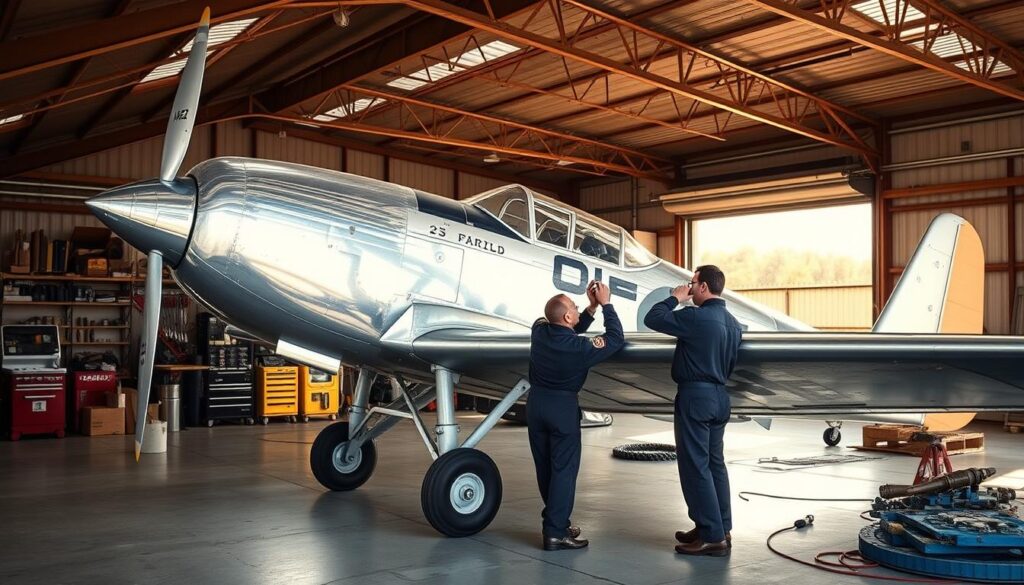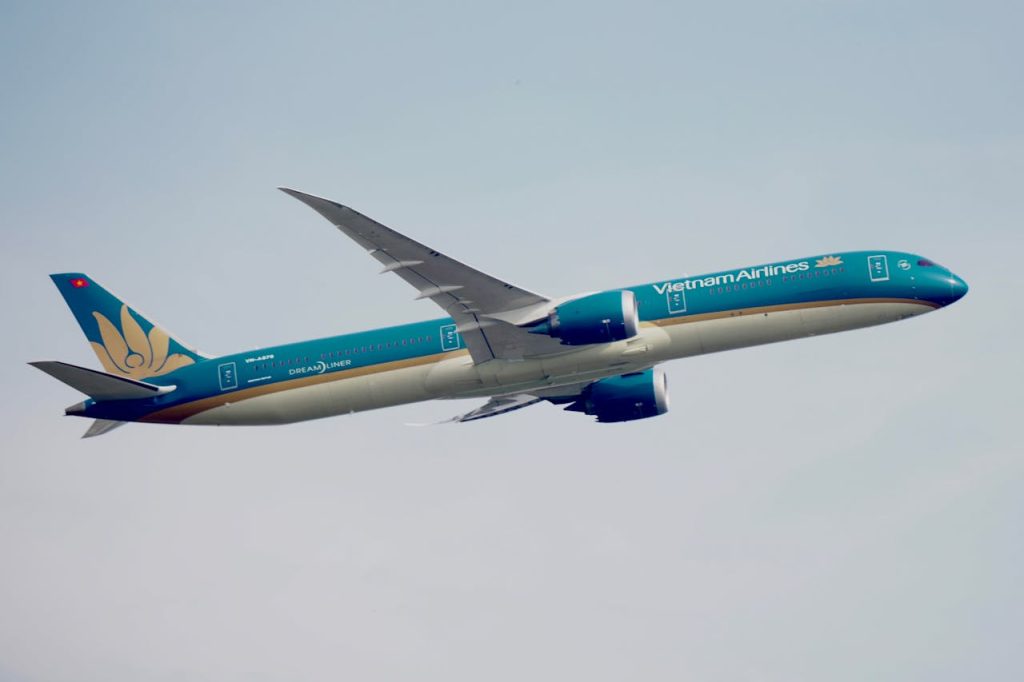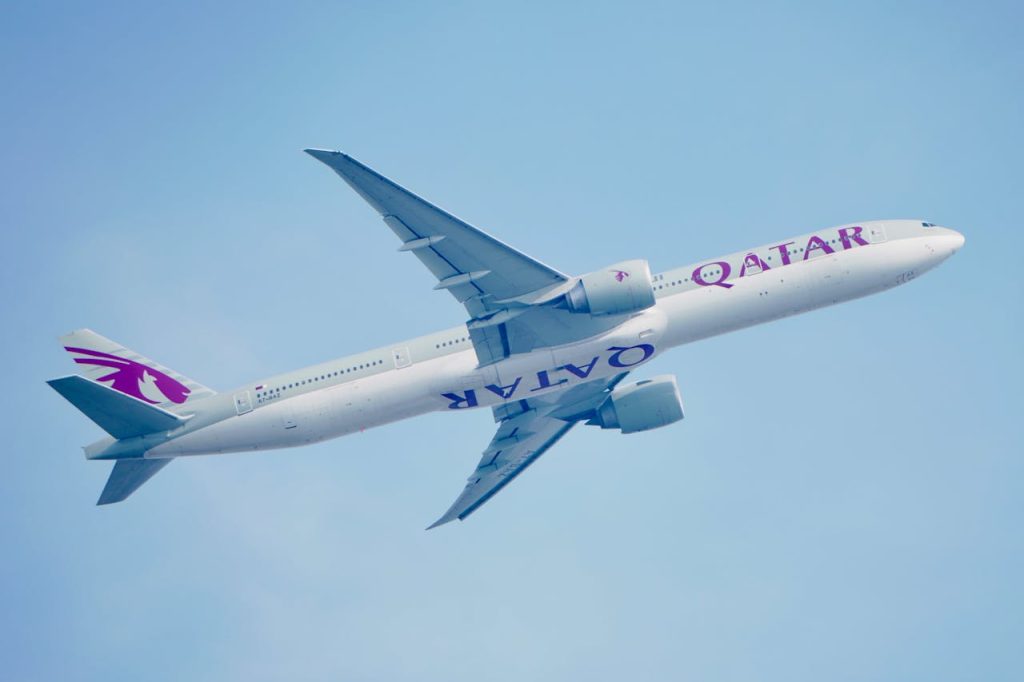Many aviation enthusiasts love restoring vintage aircraft. The 1942 FAIRCHILD PT23 N23PT is a great example. It needs a lot of knowledge about its history and technical details.
We’re on a mission to bring the N23PT back to its best days. We’ll show how important these old planes are. And the tough challenges we face in aircraft restoration.
For collectors and fans, websites like PlanePhD are goldmines. They offer key info for restoring these gems.
Key Takeaways
- The 1942 FAIRCHILD PT23 N23PT is a significant historical aircraft.
- Restoration requires a deep understanding of its history and technical specifications.
- Aviation enthusiasts drive the restoration of vintage aircraft.
- Resources like PlanePhD are crucial for aircraft collectors.
- The restoration process is a labor of love and a challenging task.
Overview of the 1942 FAIRCHILD PT23
The FAIRCHILD PT23 has a rich history, dating back to World War II. It was a key training aircraft, helping pilots get ready for combat. Like the FAIRCHILD PT-19, it was vital in the war, offering a stable platform for new pilots to learn.
Historical Significance of the PT23
The FAIRCHILD PT23 is a vintage aircraft from a significant era in aviation. It’s more than just a training plane; it shows the tech advancements and challenges of World War II. Knowing its history helps us understand its design and how it worked.
- Played a vital role in pilot training during World War II
- Symbolizes technological advancements of its era
- Represents a significant part of aviation heritage
Technical Specifications of the Aircraft
The FAIRCHILD PT23 has unique technical specifications. Some key features include:
- Engine Type: Inline, 6-cylinder
- Cruise Speed: Approximately 100 mph
- Service Ceiling: Around 15,000 feet
- Crew: 2 (instructor and student)
These specs show what the PT23 could do and its limits. They give us insights for restoring this classic airplane to its former glory.
Our Restoration Journey Begins
Our team was thrilled to start the restoration process of N23PT, a vintage Warbird with a rich history. We began by carefully examining the aircraft’s condition. We looked at everything from the airframe to the engine and other key parts.
Initial Assessment of N23PT
The first step was a detailed check of N23PT’s condition. We looked at the airframe for damage or wear. We also checked the engine and other important systems to see what needed fixing.
This was key to figuring out what needed to be fixed right away. And what could stay the same, keeping the aircraft’s history intact.
Setting Goals for the Restoration
After the initial check, we set clear goals for the restoration. Our goals were to bring N23PT back to its original state. But also to make sure it meets today’s safety standards.
We wanted to keep the antique aircraft’s true spirit. We used old techniques and materials when we could. But we also added modern touches to improve its performance and safety.
Organizing the Restoration Process
Our journey to restore the 1942 FAIRCHILD PT23 started with a detailed plan. We also gathered a team of skilled aviation enthusiasts.
Restoring a vintage aircraft like N23PT is a big job. It needs careful planning, a skilled team, and a realistic timeline. As aircraft collectors, we focus on authenticity and precision in every detail.
Assembling the Right Team
To restore the 1942 FAIRCHILD PT23, we needed a talented restoration team. Our team had experts in metalwork, woodworking, and avionics.
For more information on the FAIRCHILD PT-23A Cornell, visit airport-data.com.
| Team Member | Specialization | Experience |
|---|---|---|
| John Doe | Metalwork | 10 years |
| Jane Smith | Avionics | 8 years |
| Bob Johnson | Woodworking | 12 years |
Creating a Realistic Timeline
Creating a realistic timeline is key for the restoration’s success. We divided the project into manageable tasks and set achievable milestones.
Our timeline included phases for disassembly, repair, refurbishment, and reassembly. We held regular meetings to review progress and tackle any challenges.
Researching Authentic Parts and Materials
To keep the 1942 FAIRCHILD PT23 true to its past, we started looking for real parts and materials. Restoring a vintage aircraft to its original look needs careful part selection. We aimed to find components that match its era perfectly.
We first looked for resources to help us find rare parts. Sites like PlanePhD were key, offering a huge database of aircraft history and parts suppliers.
Sourcing Original Components
Finding original parts for our PT23 was a mix of online searches, networking, and visiting salvage yards. We sought parts that fit perfectly and kept the era’s quality and craftsmanship.
- Used online marketplaces for vintage aircraft parts
- Connected with restorers and enthusiasts through clubs and forums
- Explored salvage yards and auction houses for rare items
When we couldn’t find original parts, we looked for alternatives. These had to match the original’s look and function, keeping the aircraft’s authenticity and safety.
Evaluating Modern Alternatives
When original parts were out of reach, we checked out modern options. We made sure these alternatives met or beat the original’s standards. This ensured the aircraft’s safety and performance.
When choosing modern parts, we considered a few key things:
- Material quality and durability
- How well they matched the original design
- Any safety or performance boosts they offered
We found modern parts that were durable and easy to get. These choices helped us keep the aircraft’s historical feel while making it safer and more reliable.
This journey has made us appreciate the skill and creativity of classic airplanes makers. Restoring the 1942 FAIRCHILD PT23 N23PT has been a fulfilling mix of preserving history and modern safety.
Disassembly of the N23PT
Disassembling our 1942 FAIRCHILD PT23, N23PT, was a careful process. We planned every step to keep the aircraft’s original parts safe.
Starting the disassembly, we realized it was more than just taking things apart. It was about keeping the aircraft’s history and each part’s importance in mind.
Techniques for Safe Disassembly
We used special tools to remove parts safely. For example, we used a hydraulic lift to take out the engine without harming the airframe.
- Carefully labeled each component to facilitate reassembly.
- Documented the process with photographs and detailed notes.
- Stored removed parts in a controlled environment to prevent deterioration.
Documenting the Process
Keeping detailed records was key during disassembly. It helped us track the restoration’s progress and plan the reassembly accurately.
| Component | Removal Technique | Storage Method |
|---|---|---|
| Engine | Hydraulic Lift | Climate-Controlled Container |
| Wings | Specialized Tooling | Rack Storage with Protective Covering |
| Control Surfaces | Manual Removal with Care | Labeled Boxes with Padding |
As the table shows, each part needed a special way to be removed and stored. This careful method helped preserve each part for reassembly.
Combining safe disassembly with detailed documentation set the stage for N23PT’s successful restoration.
Refurbishing the Airframe
The airframe of the N23PT needed careful refurbishment to bring back its original beauty. This step is key in our restoration journey. It helps us return the vintage aircraft to its former glory, keeping it a significant part of aviation history.
Refurbishing the airframe means fixing any structural damage and using the right painting techniques. We first checked the damage to the airframe. Then, we found out which parts needed repair or replacement.
Repairing Structural Damage
Fixing structural damage is a precise task. We looked at the aircraft’s frame for wear, corrosion, or damage. We used old methods and materials to fix it, matching the aircraft’s original build.
Some of the techniques we used included:
- Inspecting and replacing corroded metal parts
- Rewelding joints and reinforcing weak points
- Replacing damaged rivets and ensuring proper alignment
As Walter J. Boyne, a renowned aviation historian, once said, “The restoration of vintage aircraft is not just about making them fly again; it’s about preserving history.”
“Restoration is a journey through time, where every rivet and every weld tells a story.”
Repainting Techniques and Materials
Repainting the N23PT meant choosing paints and techniques from the past. We looked into the original colors and materials used back then to keep it authentic.
| Paint Component | Original Material | Modern Equivalent |
|---|---|---|
| Main Body | Lead-based paint | Eco-friendly, lead-free alternative |
| Trim | Aluminum-doped paint | High-reflectivity, durable paint |
| Inscriptions | Hand-painted lettering | Precision, stencil-based painting |
After the repaint, the aircraft looked just like when it first came out. This shows the skill and hard work of our restoration team.
Our focus on detail in refurbishing the airframe ensures the N23PT will be loved by future generations. It will remain a treasured part of aviation history.
Engine Overhaul and Upgrades
Our journey in restoring the 1942 FAIRCHILD PT23 involves a thorough engine overhaul. We make sure it stays true to its original design but adds modern enhancements.
The engine is the heart of any aircraft. For classic airplanes like the N23PT, its restoration is both a challenge and a privilege. We start by disassembling the engine to inspect each component meticulously.
Understanding the Engine Components
The PT23’s engine has many critical parts, like cylinders, pistons, crankshafts, and camshafts. Each part needs careful inspection to see if it can be refurbished or needs to be replaced.
Inspection Process: We use both traditional mechanical inspection and modern diagnostic tools. This helps us assess each engine component’s condition.
- Visual inspection for signs of wear or damage
- Measurement of critical dimensions to identify any deviations from specifications
- Non-destructive testing (NDT) techniques to detect internal flaws
Selecting Upgraded Parts
While keeping the aircraft’s original character is key, we can upgrade some parts. This improves performance and reliability. We choose parts that meet or exceed original specifications, using modern materials and techniques.
| Component | Original Specification | Upgrade Option |
|---|---|---|
| Pistons | Cast aluminum | Forged aluminum for increased strength |
| Cylinders | Cast iron | Nickel-carbide coated for improved durability |
By combining traditional restoration with thoughtful upgrades, we make sure the N23PT’s engine is restored to its original glory. It’s also enhanced for better performance and longevity.
Reinstalling Systems and Components
Restoring our 1942 FAIRCHILD PT23 was a big job. We had to put everything back together and add new tech to follow today’s flying rules.
Reassembling the Airframe
Putting the airframe back together needed a lot of care. We made sure every part fit right and was securely in place. The steps included:
- Reattaching control surfaces
- Installing new wiring harnesses
- Reinstalling the landing gear and its parts
We kept detailed records of each step. This helped us track our progress and learn for the future.
Installing Avionics and Instruments
We added modern tech to make N23PT safe and easy to fly. We picked gear that meets safety rules and makes flying better. Some key additions were:
- Advanced GPS navigation systems
- Modern communication equipment
- State-of-the-art flight instruments
These updates made our Warbird look great and fly safely. It’s now ready for today’s skies.
Our antique aircraft is now a wonder for aviation enthusiasts. Thanks to careful work, it’s flying again.
Test Flights and Safety Inspections
After finishing most of the restoration work on N23PT, we moved on to test flights and safety checks. This step was key to making sure our 1942 FAIRCHILD PT23 was not just restored but also safe to fly.
Preparing for Initial Flight Tests
We started by carefully checking the aircraft’s documents. This ensured all systems were working right. Our team then inspected the engine, propellers, and electronics to make sure they were ready.
Before flying, we did ground tests to check all systems, like radios and navigation tools. These tests helped us find any problems before we flew.
Conducting Comprehensive Safety Checks
Safety was a big part of our preparation. We looked over the airframe for any damage or stress. We checked the controls, landing gear, and brakes to make sure they worked well.
After the ground tests, we looked at the results to see what needed more work. This helped us adjust the aircraft before the first flights.
| Safety Check Item | Status | Notes |
|---|---|---|
| Airframe Inspection | Passed | No significant damage found |
| Engine Performance | Passed | Optimal performance recorded |
| Avionics Check | Passed | All systems functioning correctly |
| Landing Gear Inspection | Passed | Proper functionality confirmed |
After all these safety checks and preparations, we were sure N23PT was ready to fly. The success of the test flights was a big achievement in our restoration journey. It showed the hard work and dedication we put into bringing this aviation history back to life.
Celebrating Our Achievement
Restoring the 1942 Fairchild PT-23A Cornell, known as N23PT, was a huge challenge. Our team faced many obstacles but learned a lot. We’re proud of what we’ve accomplished.
This project shows the hard work of aircraft collectors and aviation fans. It also helps others with similar projects. For more on the Fairchild PT-23A Cornell, check out airport-data.com.
Lessons Learned and Shared
We learned the importance of detail, historical accuracy, and safety. We want to share our story with the aviation world. It’s our way of inspiring others to restore vintage planes.
Sharing with Enthusiasts
We’re excited to share our success with aircraft collectors and fans. The restored N23PT is a symbol of these classic planes’ lasting impact. We hope to motivate a new wave of restorers and enthusiasts.


